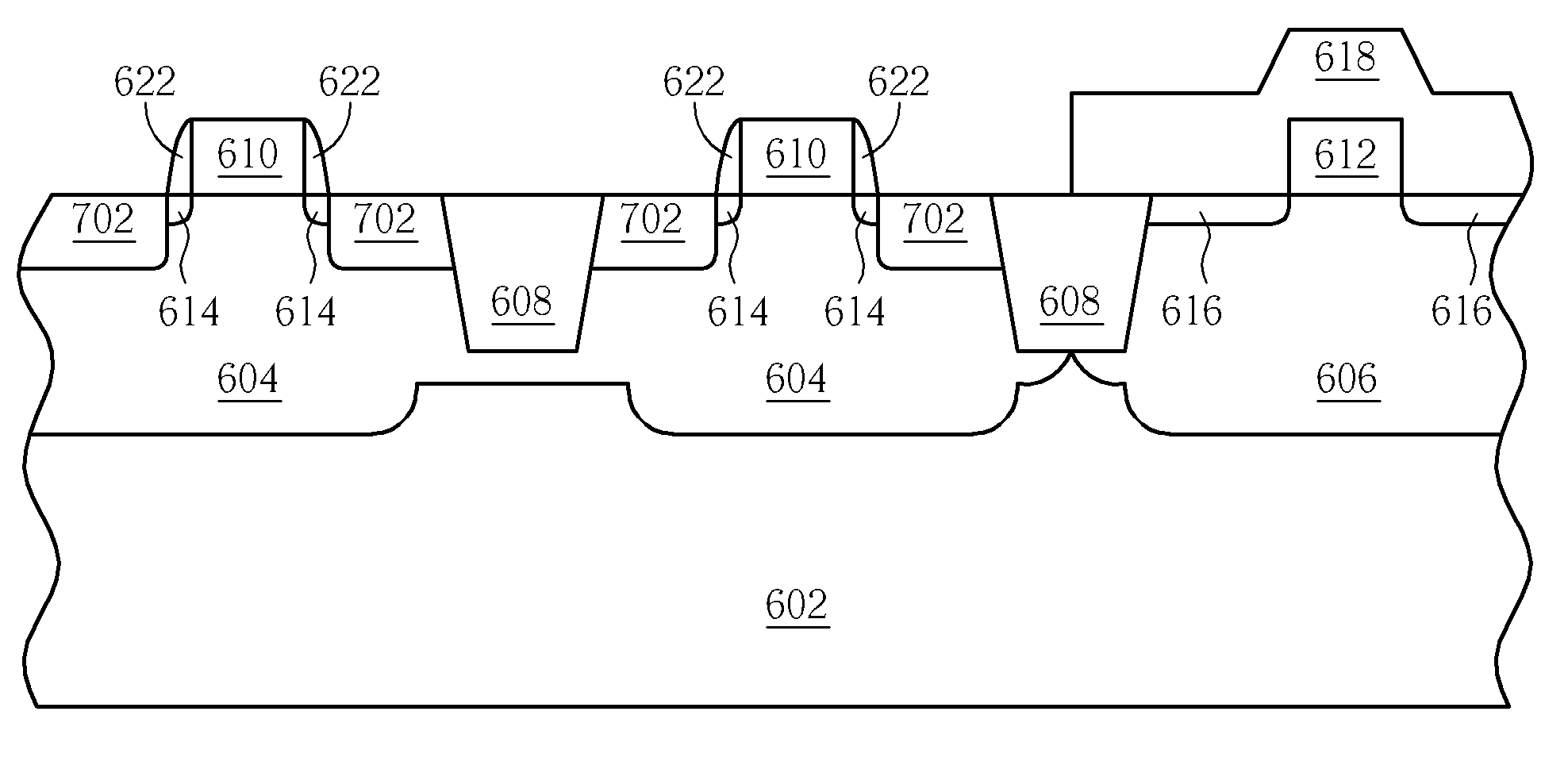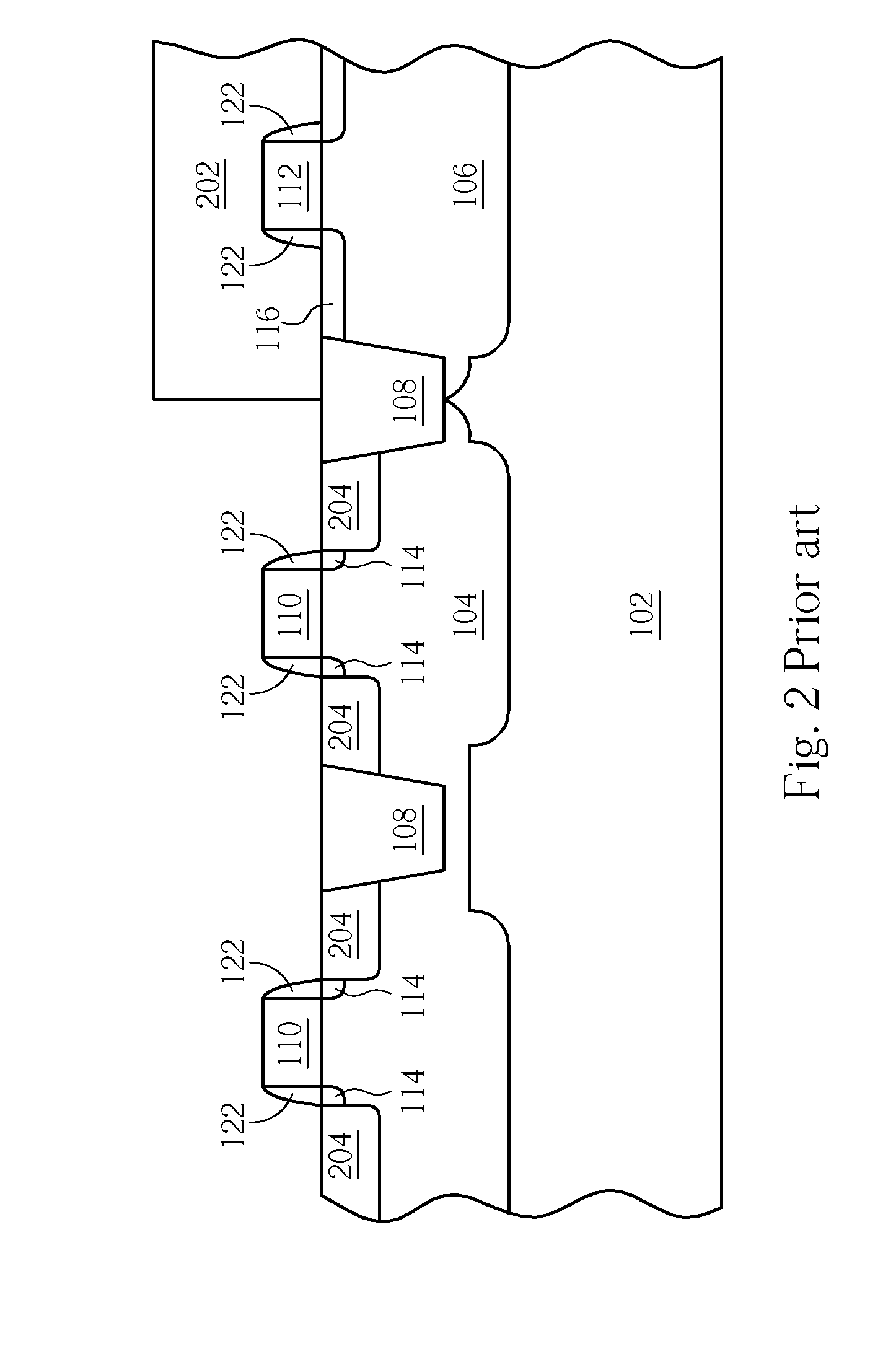Method of manufacturing complementary metal oxide semiconductor transistor
a technology of complementary metal oxide and semiconductor transistor, which is applied in the direction of semiconductor devices, electrical equipment, basic electric elements, etc., can solve the problems of component efficacy loss and excessive depletion of silicon substrates of source/drain
- Summary
- Abstract
- Description
- Claims
- Application Information
AI Technical Summary
Benefits of technology
Problems solved by technology
Method used
Image
Examples
Embodiment Construction
[0022]The present invention relates to a method of forming a PMOS transistor, an NMOS transistor, and a CMOS transistor. It applies to strained-silicon MOS transistors or a selective epitaxial growth (SEG) process that builds the source / drain of the transistor high.
[0023]Please refer to FIGS. 6 to 11. FIGS. 6 to 11 are schematic diagrams of manufacturing a CMOS transistor according to the first embodiment of the present invention. As FIG. 6 shows, a substrate 602 could be a P type silicon substrate, an N type silicon substrate, or a silicon on insulation (SOI) in the first embodiment. The substrate 602 includes an N well 604, a P well 606, and a shallow trench isolation (STI) 608. A plurality of gate structures 610 and 612 are deposited on the substrate 602. The gate structure 610 is formed on the N well 104; the gate structure 612 is formed on the P well 606, and the STI 608 is formed between the adjacent gate structures 610 and 612 in the substrate 602. The gate structures 610, 61...
PUM
 Login to View More
Login to View More Abstract
Description
Claims
Application Information
 Login to View More
Login to View More - R&D
- Intellectual Property
- Life Sciences
- Materials
- Tech Scout
- Unparalleled Data Quality
- Higher Quality Content
- 60% Fewer Hallucinations
Browse by: Latest US Patents, China's latest patents, Technical Efficacy Thesaurus, Application Domain, Technology Topic, Popular Technical Reports.
© 2025 PatSnap. All rights reserved.Legal|Privacy policy|Modern Slavery Act Transparency Statement|Sitemap|About US| Contact US: help@patsnap.com



